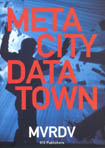9.27.2011
9.20.2011
9.19.2011
examples from below
Drift: Richard Long: A Seven Day Circle of Ground
Layer: Rem Koolhaas: Park de la Villette
Game-board: Raoul Bunschoten: Four Planning Fields for Bucharest, Romania
Rhizome: James Corner: Pivot Irrigators 1
Layer: Rem Koolhaas: Park de la Villette
Game-board: Raoul Bunschoten: Four Planning Fields for Bucharest, Romania
Rhizome: James Corner: Pivot Irrigators 1
Theory Reading 1: James Corner, The Agency of Mapping
Corner, James, “The Agency of Mapping: Speculation, Critique and Invention,” in Mappings, ed Denis Cosgrove. (London: Reakton Books, 1999), 214-252.
Maps are a representation. Maps are never neutral. Maps always have an orientation.
James Corner is writing to advocate mapping as a creative tool in the artistic/design practice. He is very careful to separate 'mapping' from 'tracing' or 'cartography'. Mapping being a creative act revealing possibilities in what exists, but also actualizing that potential. Mapping that is not just for the sake of the finished product, but the process of mapping as a creative activity, and as a design tool.
Corner brings in many philosophers and thinkers to support his view of mapping, citing Harvey, Deleuze and Guattari, de Certeau. Corner certainly pushes mapping in relation to his view that socialization and spatial arrangement are changing too rapidly and that formal expression does not evolves quick enough to be relevant. His view is that design should be of process as opposed to form. Mapping is broken into three parts, as Corner terms, fields (the frame orientation, coordinates, scale, units of measure, and graphic projection), extracts (objects but also other informational data: quantities, velocities, forces, trajectories) and plottings ('drawing out' of new and latent relationships that can be seen amongst the various extracts within the field).
These are the essential elements to a creative act of mapping and the questions which must be answered. What is the context(frame)? What elements are being mapped(extracts)? How are the elements overlapped/juxtaposed(plottings)?
Corner breaks creative mapping practice into four catagories: Drift, Layering, Game-board, Rhizome
Drift: Richard Long, Guy Debord
Layering: Koolhaas, Tschumi; Park dela Villette
Game-Board: Raoul Bunschoten
Rhizome: James Corner: Pivot Irrigators 1
In the end, Corner is pushing his creative objective, that of designing interactions and processes as opposed to form per se.
9.13.2011
Diagram time!
In my reading and thinking, (which makes sense from my precedents) I continually find myself coming back to the notion of rationalism, or rather hyper-rationalism. Is it a good thing? A bad thing? To what extent does it affect my thesis?
Theory
MVRDV: Datacity/Metacity
Manuel DeLanda: Philosophy and Simulation: The Emergence of Synthetic Reason
Manuel DeLanda: Philosophy and Simulation: The Emergence of Synthetic Reason
Subscribe to:
Posts (Atom)
















